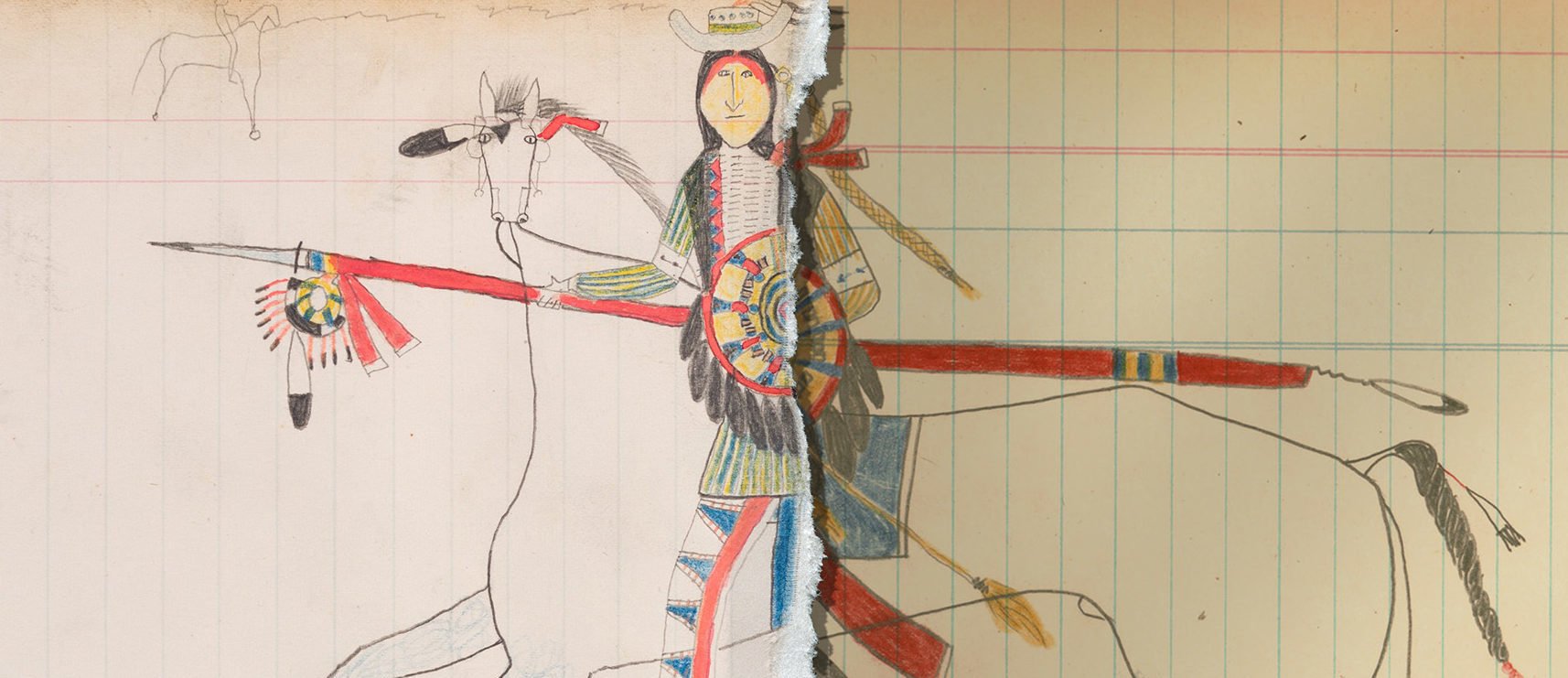How a dozen possibly fraudulent and forged Indigenous artworks left Texas and ended up on museum walls in Wyoming.
By Chris O’Connell and Savannah Maher
October 21, 2020
This article was reported in collaboration with Wyoming Public Media and created in partnership with the Economic Hardship Reporting Project. This article was published in partnership with The Nation.
It’s a modest museum on the edge of a modest town. The Lander Pioneer Museum is dimly lit, a nod to its log cabin beginnings, and its mismatched display cases house everything from antique saddles to applesauce mills—artifacts of early settlers in what is now Lander, Wyoming. In the main gallery, a placard announces the institution’s major show, “Tribal Warrior Art.” The exhibition, which debuted in fall of 2018, contains about 100 ledger art drawings—narrative illustrations created by Indigenous artists from the Plains on discarded account books, mostly during the late 19th century.
The show is a windfall for the museum; authentic ledger art often carries a price tag that far exceeds the institution’s annual curatorial budget and is typically housed in much larger, more prominent museums. For example, “Kiowa Chiefs on a Visit to the Agent,” which depicts a Kiowa delegation on its way to meet U.S. officials, is archived at the Metropolitan Museum of Art in New York City.
And therein lies the problem. The centerpiece of the Pioneer Museum’s show is suspiciously similar to the one at the Met; what’s different is the number of delegates, the reversal of a lead figure, and the drawing style. Then there’s a battle scene drawing in the show—which looks much like a piece in the Blanton Museum in Austin, Texas. And the artist credited to that piece? Several experts say they have no knowledge that he ever existed.
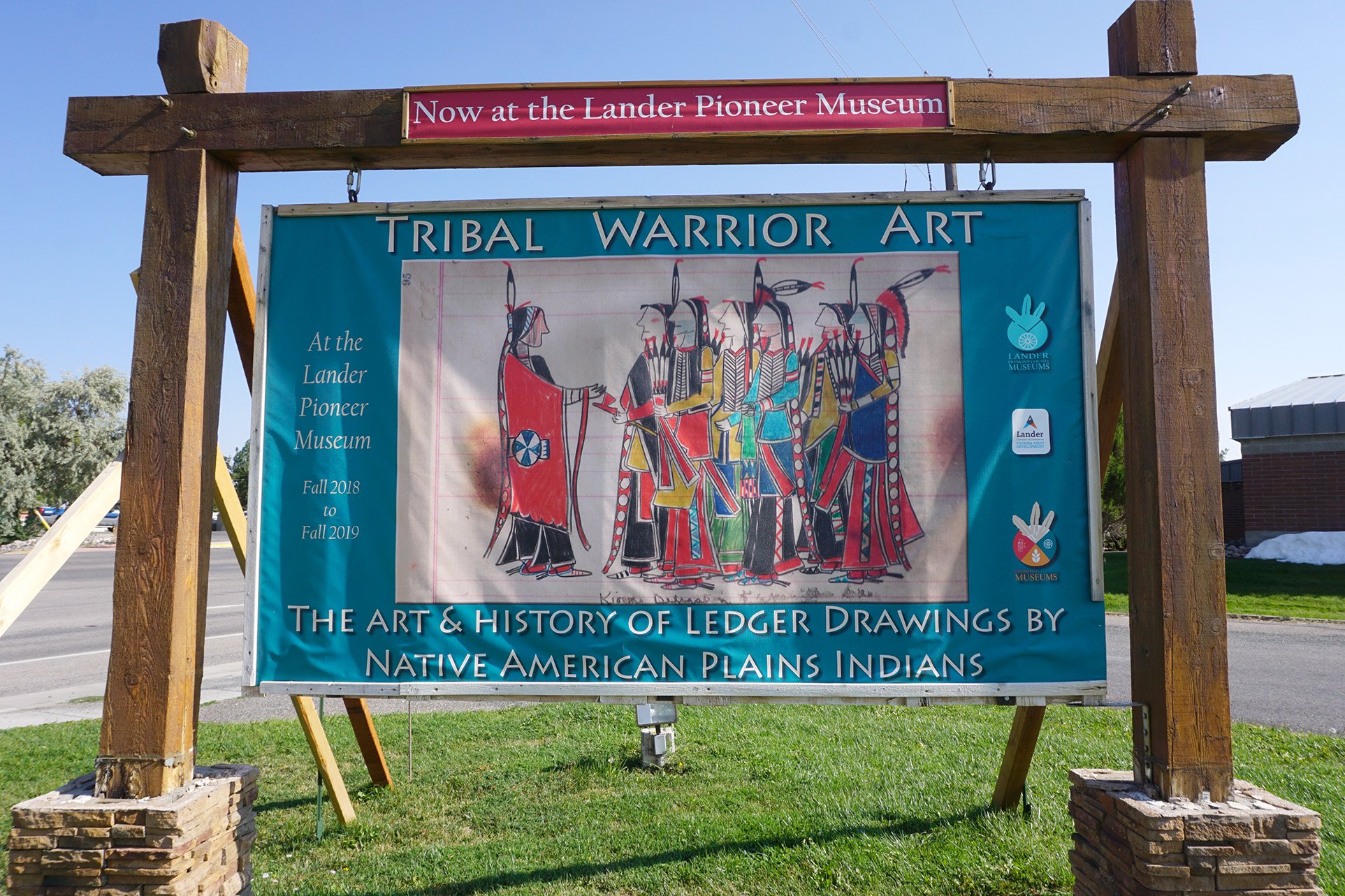
At least twenty of the pieces that have been on display at the Lander Pioneer Museum for the past two years are possible forgeries or frauds. The suspected counterfeit art speaks to a serious problem with authentication in the art world—one in which an eBay auctioneer in East Texas used online markets to sell unauthenticated, and perhaps forged art to a Wyoming buyer with no formal expertise, who then transferred that art to a museum where it was presented to the public as real.
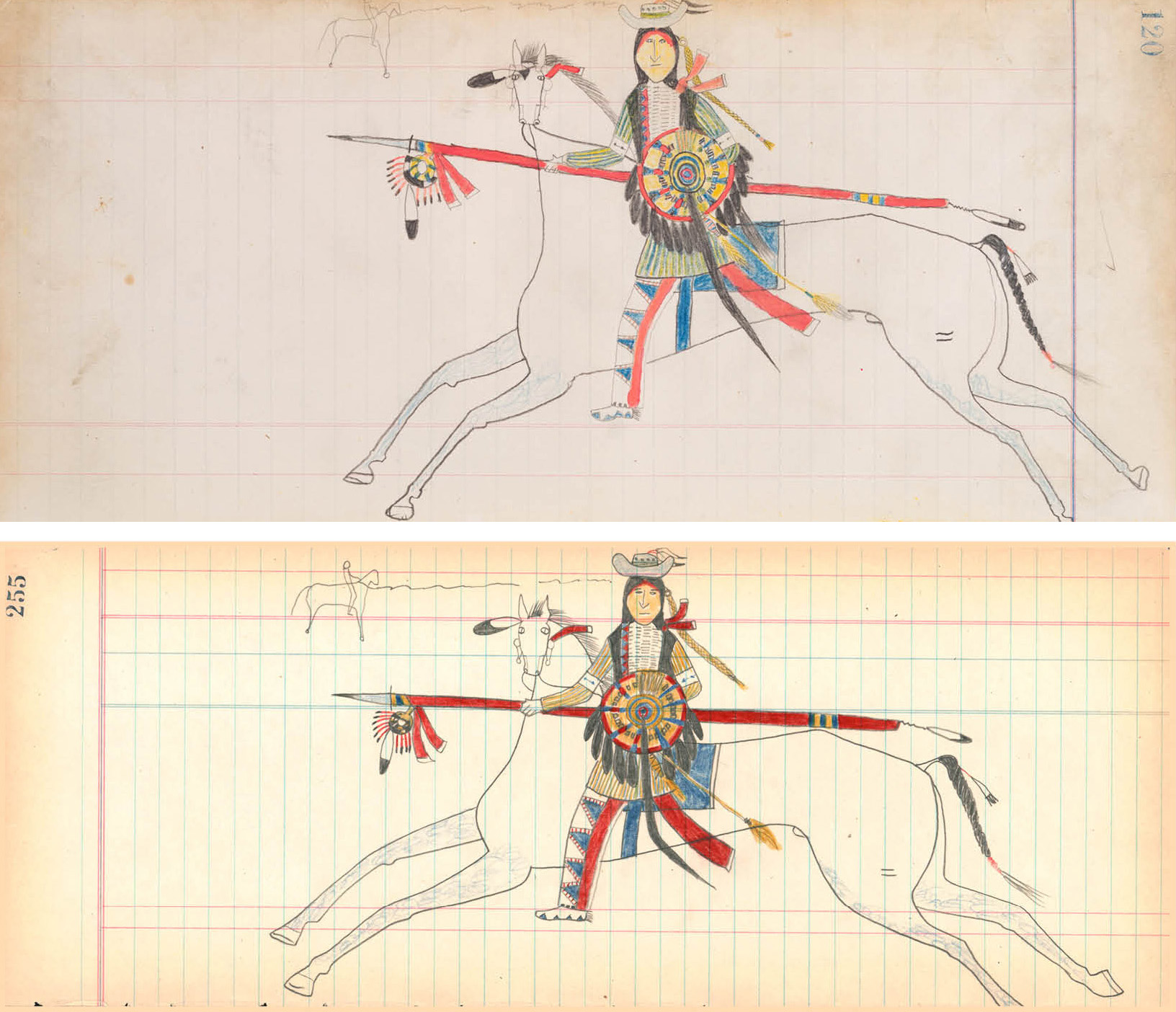
Under the Indian Arts and Crafts Act of 1990 (IACA), a truth-in-advertising law that prohibits the misrepresentation of Indigenous art products, only the seller of forged work, and possibly the platform, eBay, can face civil or criminal penalties. However, that law applies only to Native American artwork produced after 1935. While the pieces on display at the Pioneer Museum supposedly predate that year, experts we spoke with suggest that more than a few of them may have been created in the last decade or so.
But the potential forgeries also speak to the ongoing exploitation of Indigenous peoples: communities that already fit uneasily into the world of fine art and often remain marginalized by inaccurate representations, persistent cultural appropriation, and sellers peddling fake Native American art. Between January and August of this year, the Indian Arts and Crafts Board has received approximately 500 complaints about fake Indigenous art ranging from counterfeit jewelry to paintings. Generally, the agency receives around 200 complaints a year, and since 2000, only 39 complaints have led to an indictment. That means it’s not clear if justice, whatever that means here, is even possible in Wyoming.
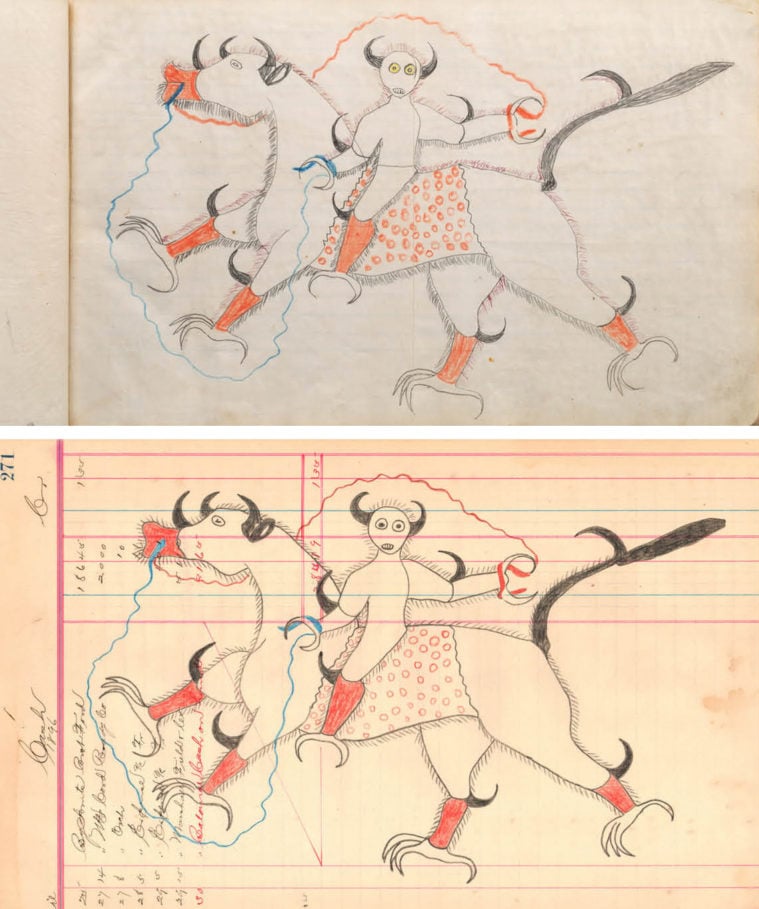
“Most of the people who buy this stuff have big bucks,” says Jim Stewart. “Retired school teachers aren’t typically in this ballgame.”
Stewart is a short, sturdy man in his 80s. His white hair is often covered by a baseball cap that boasts his service in the U.S. Navy. A Lander local, he serves on the board of directors at the Lander Pioneer Museum, where his personal, 150-piece ledger art collection has been rotated through the “Tribal Warrior Art” show for nearly two years.
When he’s not fixing broken display cases at the museum, he’s enjoying the exhibit, and can explain with gruff authority how the details of the ledger pieces—the style of a horse’s bridle, or the cut of a person’s hair—offer clues about an artist’s tribal affiliation. He’s got a sharp eye for the stuff, he says, sometimes sharper than the online dealers who supplied the entire collection. “I know more about what they sell, I think, than they do,” he says.
Prior to forced relocation, war, and genocide, Indigenous people created narrative art on a multitude of canvases like rocks, wood, and buffalo hide. That is until the late 1860s, when bands of white hunters, sanctioned by the United States, enacted a scorched earth policy, mass-killing swaths of buffalo populations in an effort to decimate Indigenous populations on the plains. With the loss of the buffalo, tribal artists and record keepers shifted from hide to paper, and in many cases, lined pages pulled from ledger books—hence the name “ledger art.”
Because ledger art is fragile and much of it has not been professionally preserved, authentic pieces are relatively rare—except in Texas. Here, Stewart has managed to purchase at least two dozen drawings over the last 10 years or so from an online seller by the name of Keith Lack.
“He’s a middle man between whoever has a collection [and potential buyers]. He doesn’t collect, he rolls over collections,” Stewart says. “And who does he buy from? He doesn’t disclose that.”
Originally from California, Keith Lack calls Jefferson, in East Texas, home. On social media profiles, he lists himself as a visual effects artist, an accomplished stage and screen actor, and a magician who performed his act on MTV in the 1990s. In addition to his work in film and magic, he performed in a series of radio plays produced by the Jefferson Opera House Theatre Players this spring.
According to Lack, ledger art post-1900 is “quite common” and can be found for relatively cheap, despite expert assertions to the contrary. Since at least 2014, he’s been able to sell around 100 pieces of ledger art on eBay. Worthpoint, a website that aggregates online auctions, has captured these listings, which do not name Lack directly, but use language that is identical to his eBay listings.
Lack has sold some of these pieces for as low as $55. By comparison, ledger drawings in good condition might fetch upward of $3,500, while exceptional pieces, like the one sold by Heritage Auctions earlier this year, went for $106,250 at auction, a record high. Lack’s low prices raise major red flags for serious curators and experts, but they fit comfortably within the budgets of hobbyists like Jim Stewart, who says buying from Lack and other online sellers is a way to indulge a life-long interest in the form without breaking the bank. “I go on the internet and I just call up ‘Indian ledger art.’ I Google it,” he says. “You get hundreds and hundreds and hundreds of results.”
Stewart sticks with sellers like Lack who not only offer much lower prices, but will occasionally reach out before listing a batch of drawings on eBay to offer private, discounted prices. Stewart likens the experience to hitting up a pawn shop or a used car lot.
Two artists featured in “Tribal Warrior Art” go by the names of Sam Lomo and Nadya Loomis. According to Lack, the pieces associated with these two artists came from Colorado. Originally interested in finding and buying vintage tobacco advertising ads, Lack says he came across framed ledger art pieces at the home of a seller who claimed that their grandfather, a tobacco salesman, befriended the artist Sam Lomo at a Wild West show in the 1920s. Lomo claimed to be a former scout for the U.S. Army and worked in the show, but in his off-time, he made ledger art drawings to sell to tourists. The tobacco salesman bought a multitude, then Lack bought them from his grandchild.
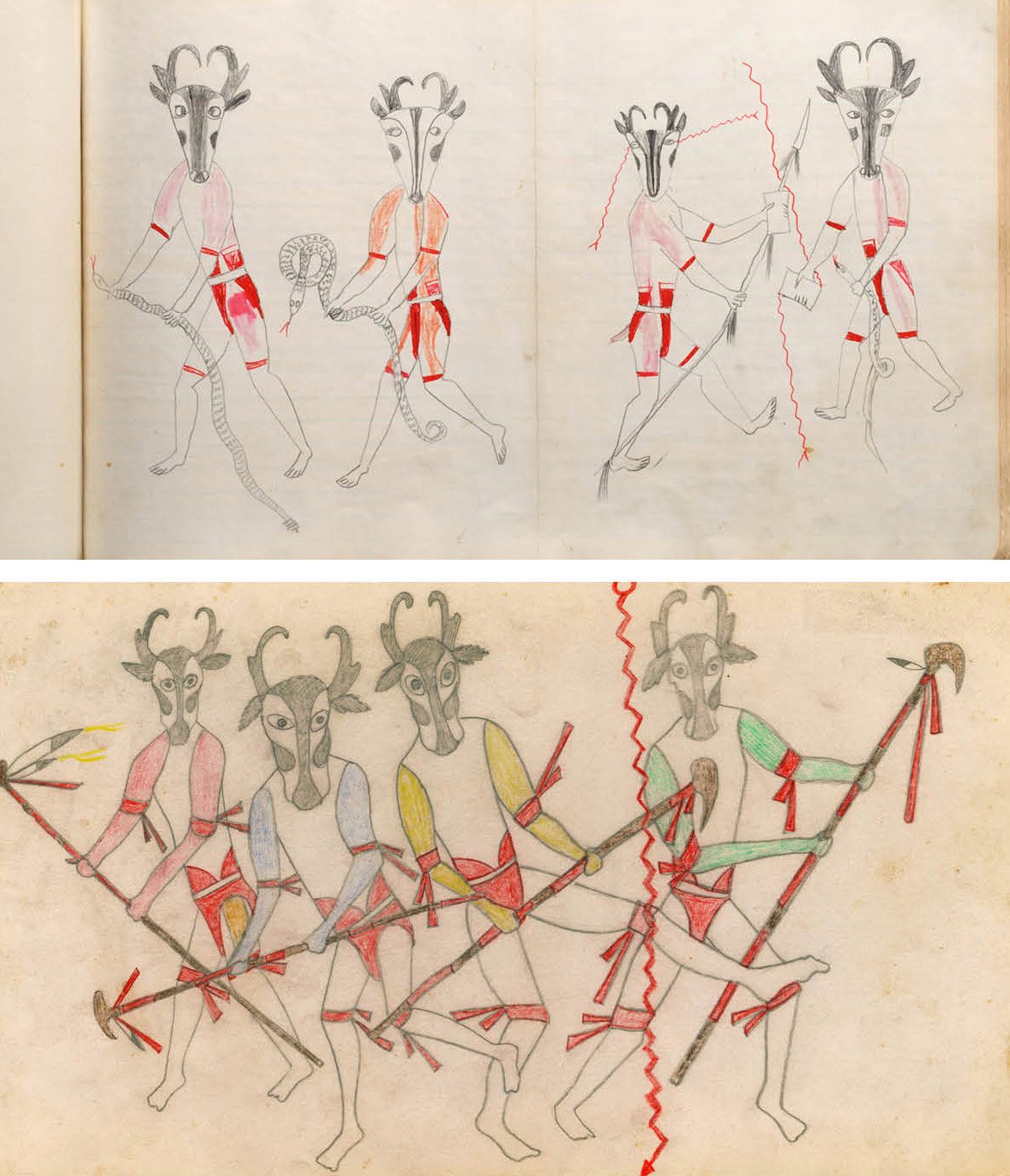
Bottom Image: “Ant Dancers,” as featured at the Lander Pioneer Museum, is credited to Nadya Loomis. Top Image: Fenimore Art Museum, Cooperstown, New York, Gift of Eugene V. and Clare E. Thaw, T0614-46. Photograph by Richard Walker. Bottom Image: Courtesy of the Lander Pioneer Museum
“I am not at liberty to give out names and contact information as I still buy items from them and will not give out that information for obvious reasons,” Lack wrote in an email after declining to be interviewed by phone for this story. “Not to mention it would be an invasion of trust and privacy.”
In most of his eBay listings, Lack doesn’t provide specifics about Lomo’s tribal affiliation, but a few list him as Sioux. Listings on some secondary auction sites identify Lomo’s works as “Kiowa Native American Ledger Drawing(s).” Lack says that “no one knew specifically what tribe” Lomo came from. “Was he a real person? Most likely,” Lack wrote in an email. “Was he a Native American? It is unclear either way.”
That question of authenticity and provenance is a major problem.
Kiowa Museum curator and artist Tahnee Growingthunder says it’s highly unlikely that a ledger artist as prolific as Sam Lomo would fly under the radar of any Indigenous community, including her own. Growingthunder says the name “Lomo” is unknown to elders and others in the community. As well, the Kiowa Tribe had no record of anyone by that name on official enrollment records.
When contacted for more information on Sam Lomo, scholars and curators at the Denver Art Museum, the University of New Mexico, the University of Oklahoma, Texas Tech University, and others had never heard of him. Lomo isn’t listed on the Plains Indian Ledger Art database, a project led by the Department of Ethnic Studies at University of California San Diego.
The same goes for Nadya Loomis, the artist credited on about a dozen drawings at the Lander Pioneer Museum. If Loomis existed, she would be one of the first women to ever create Ledger art in the early 20th century. An online search, however, only finds her name attached to Lack’s eBay listings—and now, on the walls of the Pioneer Museum.
Take the battlefield scene in the Pioneer Museum’s show. Purchased from Lack and credited to Sam Lomo, it’s similar to another piece housed at the Blanton that is believed to depict the 1874 Battle of Buffalo Wallow. “It’s a borrow,” insists Jim Stewart. Lomo, Stewart reasons, must have seen the original drawing and created a “flashier” version to sell to tourists at the Wild West show. How this is possible is unclear as the original drawing was held in a private collection in Germany from the late 19th century until 1964. In 1915, when Lomo allegedly borrowed its subject matter, the drawing had not yet emerged from obscurity, raising the question of just when the Lomo piece was created.
Stewart applies the same logic to four drawings, which he purchased from Lack and credits to Nadya Loomis, that bear an uncanny resemblance to works by the Sans Arc Lakota artist Black Hawk. Drawn in 1880 or 1881, Black Hawk’s original drawings were purchased by a white trader and passed down through his family for most of the 20th century. The drawings were briefly lent to a museum in Los Angeles in 1933, leaving open an incredibly slim possibility that a Lakota woman might have come across them, committed them to memory, and produced copies some time before 1940.
But Stewart has also considered the possibility that his “Loomis” pieces are actually reproductions made by Black Hawk himself: Since the artist was paid 50 cents a piece for his original drawings, it’s only logical he would replicate them, he argues. “If Ford makes one car and he can sell it, he’s going to start making more cars. Right? Same with these guys,” he says. “Which one’s the chicken and which one’s the egg, I cannot tell you.”
One of those questionable drawings, labeled “Thunder Destroyer” in the exhibit and sold to Stewart by another eBay seller, is drawn on a ledger dated 1896, some 16 years after Black Hawk drew the original and seven years after he is believed to have died.
Then there’s “Arapaho Dog Soldier,” a splurge for Stewart, who picked it up for $250 in 2018. It’s a nearly identical copy of a self-portrait by Southern Arapaho artist Frank Henderson. According to Stewart, the two versions of the drawing have identical origin stories: They were created by the same artist using the same medium during the same window in time. The only difference is one was acquired by the Met and the other ended up on eBay.
Still, Stewart maintains that he knows how to spot a fake and would never buy one. In fact, he says his expertise is so strong that he could produce his own convincing fakes if he ever wanted to. “I’m proficient,” says Stewart, who holds a studio art degree and worked 18 years as a public school art teacher. “If I was dishonest, I could fool people.”
“I would say I am 99 percent certain they’re not what they say they are,” Tahnee Growingthunder says. “And if I’m proven wrong, then that’s just my own mistake. But I am brave enough to put it out there to say that this is not accurate. This is not authentic art.”
Joe Horse Capture, curator and vice president of Native Collections at the Autry Museum of the West, agrees. After reviewing images of seven drawings on display at the Lander Pioneer museum that are credited to Lomo and Loomis, Horse Capture says they “do not seem like historic works at all.” So many elements in the pieces are anachronistic that he doesn’t know where to begin. “I think it’d be better to ask, ‘What in here is quite right?’” he says. “It’ll be a shorter list.”
Without physically handling the works, Horse Capture can’t say outright that they are fakes. That said, he has seen hundreds of pieces of Plains narrative art and maintains that he’s never seen this style of narrative drawing before.
“It makes me wonder when these were actually produced,” Horse Capture says. “It seems likely that these were done within the past decade, maybe. They’re certainly not historic.”
When Jim Stewart offered to loan out his collection, Randy Wise, the site manager of the Pioneer Museum, jumped at the opportunity. And while Wise says he had questions about some of the drawings, he took Stewart’s word that they were authentic. When presented with the findings of this investigation, Wise conceded that he was “not surprised” many of the drawings may be fake. “I wouldn’t be surprised if we have some fake beadwork, too,” he said with a chuckle, adding that the museum is likely “in good company” among other small museums with few resources.
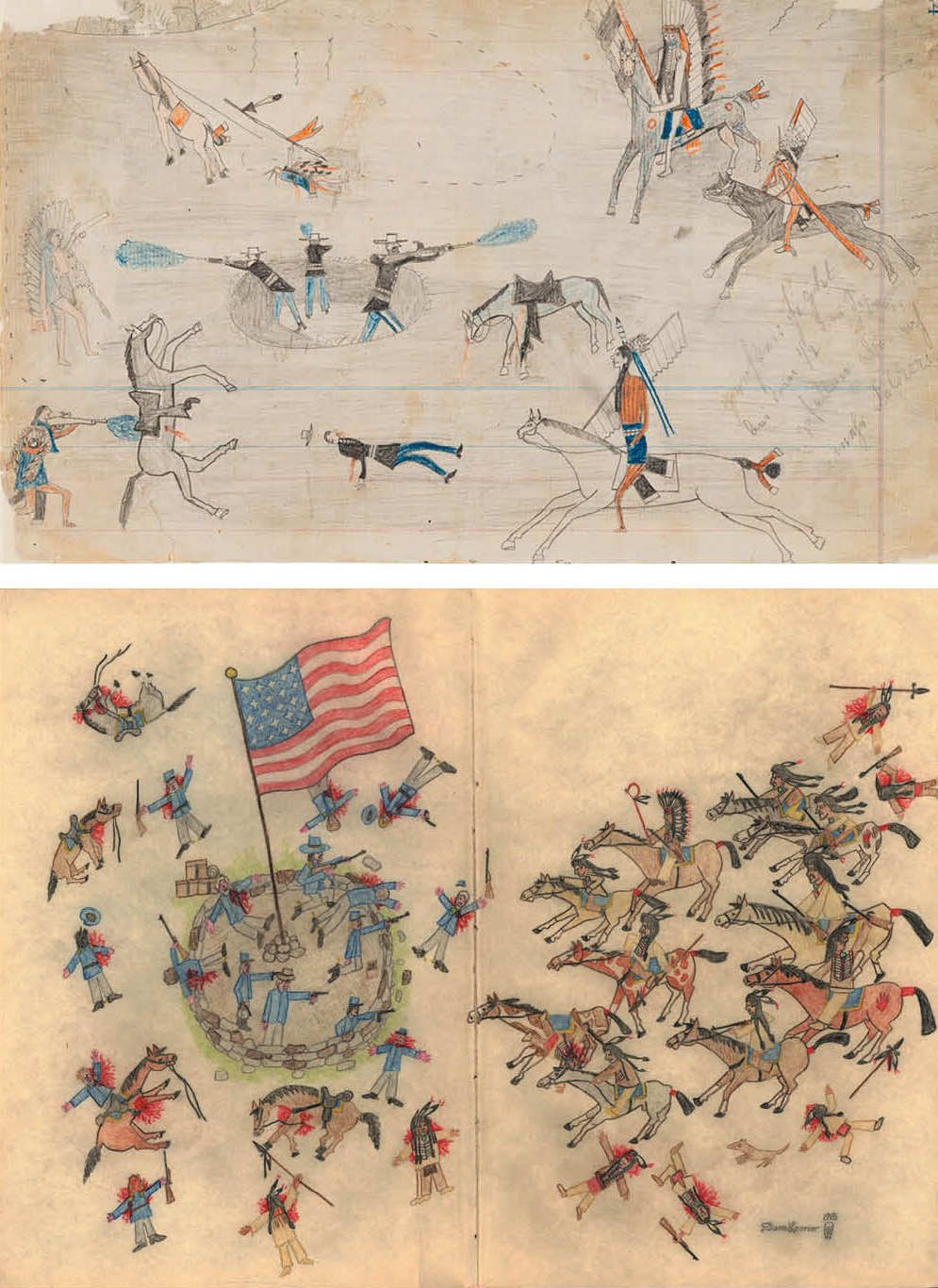
Bottom Image: “Battle Scene.” Attributed to Sam Lomo, this image was sold to Jim Stewart by Keith Lack and appears in the Lander Pioneer Museum’s show “Tribal Warrior Art.” Experts say Sam Lomo likely never existed and that the image may have been created in the last decade. Top Image: Blanton Museum of Art, The University of Texas at Austin, Transfer from Texas Archeological Research Lab, 2016. Bottom Image: Courtesy of the Lander Pioneer Museum
Scott Goetz, director of the museum network that includes the Lander Pioneer Museum, declined an interview and instead emailed a statement calling the situation “unfortunate” but says the blame lies with the sellers. “It is sad that there are individuals who would take advantage of such an important cultural aspect of Native American history,” Goetz wrote.
But Lack denies any wrongdoing and says he is not responsible for the pieces he sold to Stewart. “If he authenticated these items himself and gifted/sold them to a museum, that would be solely on him,” Lack wrote when presented with the reporting in this story. “Museums have curators. Their job is to authenticate any items they display in their galleries and to take responsibility for the collections.”
This may seem like small potatoes in the landscape of art forgery cases. A bunch of possibly fake Native American pieces that sold for a couple hundred bucks each and hung in a small-town museum don’t carry the same weight as the fake Mark Rothkos and Jackson Pollocks sold by the Knoedler Gallery or the national art forgery ring the FBI busted in Michigan this summer.
But regardless of the size of these operations, marginalization is the point. Native American art has only been taken seriously by non-Native collectors and curators in the last 50 or so years, and never to the same degree as American or European art. If a forged George Ault is cause for an FBI raid, does a forged Black Hawk warrant the same resources and attention?
Indigenous artists, curators, and historians say yes. The space for Indigenous artists is small enough, and to have those slivers of space filled with modern knockoffs by fictitious artists is an additional indignity.
Tahnee Growingthunder says all of this could have been avoided if Stewart or the museum had simply reached out to the tribes in question and asked for authentication. But she says collectors and institutions sometimes skip this crucial step because they fear that a tribe will try to repatriate an item.
Meanwhile, Keith Lack continues to list artwork for sale on eBay. His item descriptions all have a caveat: “I am not a Native American Expert. I find items that are unique and make wonderful additions to collections or decor and list them with the information I get at the time I acquire (or agree to take on consignment) the item.” His recent sales include a work clearly based on an 1890 drawing titled “Short Bull Falls From Wounded Horse,” which is housed at the Met. “This is a well-known drawing and well published,” says Joe Horse Capture, after comparing Lack’s version to the original. “Clearly whoever made this contemporary version of it used Short Bull’s drawing as a base.”
In his listing, titled “Original Indian School Ledger Drawing. 1919,” Lack included the phrase “Carlisle Nidian [sic] Industrial School” and the year, 1919 implying the time and place the piece was produced. Yet, the notorious boarding school shuttered the year prior, and was formally turned over to the U.S. Army on September 1, 1918. A representative from the Carlisle Indian School Digital Resource Center at Dickinson College told us that the piece could not have been created at the school in 1919 because the school did not exist then, and that its “association with Carlisle is immediately suspect.” It sold for $270 in mid-August.
This is the kind of piece that, with another careless chain of custody, could end up on the walls of a museum where elementary school children will huddle around the drawing as a docent describes the scene from a Native artist who never existed.
“Tribal Warrior Art” is now coming down at the Lander Pioneer Museum. It’s unclear where the pieces will go next, if anywhere.
Disclosure: Kiowa Museum curator Tahnee Growingthunder is a cousin of Tristan Ahtone, the Texas Observer’s editor-in-chief. This played no role in the reporting of this story.
